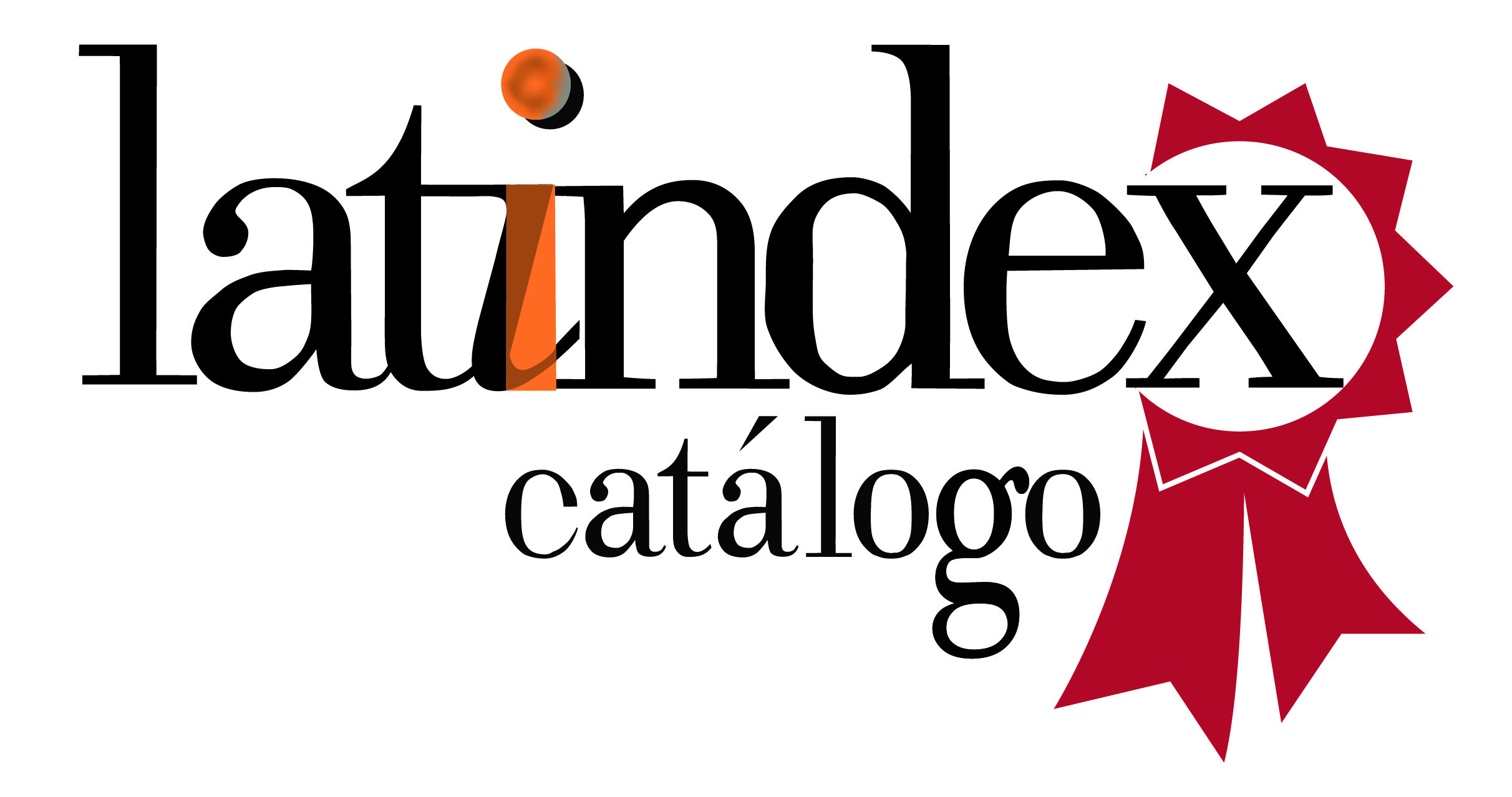Evaluación de la consistencia interna y dimensionalidad de la Escala de Capital Social Cognitivo en adultos colombianos
DOI:
https://doi.org/10.52379/mcs.v8i1.363Palabras clave:
Capital social, Análisis de factores, Confiabilidad, Validez, Estudios de validaciónResumen
Introducción: durante las últimas dos décadas, el concepto de capital social se ha utilizado con creciente frecuencia en las ciencias de la salud debido a las relaciones directas e indirectas entre el capital social y la salud física y mental de las poblaciones. Por tanto, es necesario construir un instrumento para cuantificar este concepto con seguridad y confiabilidad. Objetivo: analizar la consistencia interna y dimensionalidad de una escala de siete ítems para medir el capital social en adultos de la población general de Colombia. Metodología: se realizó un estudio de validación en línea, que incluyó una muestra de 700 adultos de entre 18 y 76 años, el 68 % eran mujeres. Los participantes completaron una escala de siete ítems llamada Escala de Capital Social Cognitivo (ECSC). El alfa de Cronbach y el omega de McDonald se calcularon para probar la consistencia interna. Se realizaron análisis factoriales exploratorios y confirmatorios para explorar la dimensionalidad de la ECSC. Resultados: la ECSC presentó una consistencia interna baja (alfa de Cronbach de 0,56 y omega de McDonald de 0,59) y pobre dimensionalidad. Seguidamente, se probó una versión de cinco ítems (ECSC-5). La ECSC-5 mostró una alta consistencia interna (alfa de Cronbach de 0,79 y omega de McDonald de 0,80) y una estructura unidimensional con indicadores de bondad de ajuste aceptables. Discusión: la ECSC-5 presenta alta consistencia interna y una estructura unidimensional para medir el capital cognitivo social en adultos colombianos. Se recomienda la ECSC-5 para la medición del capital social en la población general colombiana. Futuras investigaciones deben corroborar estos hallazgos en aplicaciones de lápiz y papel y explorar otros indicadores de confiabilidad y validez.
Descargas
Citas
Moore S, Kawachi I. Twenty years of social capital and health research: A glossary. J Epidemiol Community Health.2017;71(5):513-7. https://doi.org/10.1136/jech-2016-208313
Häuberer J. Social capital theory. Toward a methodological foundation. Wiesbaden: VS Research; 2011.
Rouxel PL, Heilmann A, Aida J, Tsakos G, Watt RG. Social capital: theory, evidence, and implications for oral health. Community Dentist Oral Epidemiol.2015;43(2):97-105. https://doi.org/10.1111/cdoe.12141
Portes A. Social capital: Its origins and applications in modern sociology. Ann Rev Sociol.1998;24(1):1-24. URL.
Keszei AP, Novak M, Streiner DL. Introduction to health measurement scales. J Psychosom Res.2010;68(4):319-23. https://doi.org/10.1016/j.jpsychores.2010.01.006
Iyer S, Kitson M, Toh B. Social capital, economic growth and regional development. Region Stud.2005; 39(8):1015-40. https://doi.org/10.1080/00343400500327943
Reyes S, Giovannoni G, Thomson A. Social capital: Implications for neurology. Brain Behav.2019;9(1):e01169. https://doi.org/10.1002/brb3.1169
Claridge T. Dimensions of social capital-structural, cognitive, and relational. Soc Capital Res.2018;1:1-4. URL.
Poortinga W. Community resilience and health: The role of bonding, bridging, and linking aspects of social capital. Health Place.2012;18(2):286-95. https://doi.org/10.1016/j.healthplace.2011.09.017
Szreter S Woolcock, M. Health by association? Social capital, social theory, and the political economy of public health. Int J Epidemiol.2004;33(4):650-67. https://doi.org/10.1093/ije/dyh013
Abbott S, Freeth D. Social capital and health: starting to make sense of the role of generalized trust and reciprocity. J Health Psychol.2008;13(7):874-83. https://doi.org/10.1177/1359105308095060
Harpham T, Grant E, Thomas E. Measuring social capital within health surveys: Key issues. Health Policy Plan.2002;17(1):106-11. https://doi.org/10.1093/heapol/17.1.106
De Silva MJ, McKenzie K, Harpham T, Huttly SR. Social capital and mental illness: A systematic review. J Epidemiol Community Health. 2005;59(8):619-27. https://doi.org/10.1136/jech.2004.029678
Ferlander S. The importance of different forms of social capital for health. Acta Sociol.2007;50(2):115-28. https://doi.org/10.1177/0001699307077654
Riumallo-Herl CJ, Kawachi I, Avendano M. Social capital, mental health and biomarkers in Chile: Assessing the effects of social capital in a middle-income country. Soc Sci Med.2014;105:47-58. https://doi.org/10.1016/j.socscimed.2013.12.018
Van Der Gaag M, Snijders TA. The Resource Generator: social capital quantification with concrete items. Soc Network.2005;27(1):1-29. https://doi.org/10.1016/j.socnet.2004.10.001
Mignone J, Elias B, Hall M. Validation of a culturally appropriate social capital framework to explore health conditions in Canadian First Nations Communities. Int Indigen Policy J.2011;2(1):3. https://doi.org/10.18584/iipj.2011.2.1.3
Wang P, Chen X, Gong J, Jacques-Tiura AJ. Reliability and validity of the Personal Social Capital Scale 16 and Personal Social Capital Scale 8: Two short instruments for survey studies. Soc Indic Res.2014;119(2):1133-48. https://doi.org/10.101607/s112205-013-0540-3
Chen X, Wang P, Wegner R, Gong J, Fang X, Kaljee L. Measuring social capital investment: Scale development and examination of links to social capital and perceived stress. Soc Indic Res.2015;120(3):669-87. https://doi.org/10.101607/s11205-014-0611-0
Pérez J, Bustos JM, Reiko ME. Confianza: Un estudio psicométrico desde la perspectiva del capital social. Rev Electron Psicol.2017;7(14):5-13. URL.
Fernández JA, Pinzón CE, Moreno J, Cepeda MC, Idrovo AJ. Capital social en áreas rurales: Adaptación al español y validación factorial de una escala. Cienc Saude Colet.2014;19(7): 2207-14. https://doi.org/10.1590/1413-81232014197.09442013
Martin KS, Rogers BL, Cook JT, Joseph HM. Social capital is associated with decreased risk of hunger. Soc Sci Med.2004;58(12):2645-54. https://doi.org/10.1016/j.socscimed.2003.09.026
Sapag, JC, Aracena M, Villarroel L, Poblete F, Berrocal C, Hoyos R, et al. Social capital and self-rated health in urban low-income neighbourhoods in Chile. J Epidemiol Community Health.2008;62(9):790-2. https://doi.org/10.1136/jech.2006.052993
Alvarado R, Sapag JC, Arellano J, Alarcon A, Tapia E. Capital social y salud mental en una muestra representativa de trabajadores chilenos. Rev Fac Cienc Med Cord.2015;72(4):227-35. https://doi.org/10.31053/1853.0605.v72.n4.13798
Holt-Lunstad J, Smith TB, Layton JB. Social relationships and mortality risk: a meta-analytic review. PLoS Med. 2010;7(7):e1000316. https://doi.org/10.1371/journal.pmed.1000316
Sampson R, Raudenbush S, Earls F. Neighborhoods and violent crime: A multilevel study of collective efficacy. Science. 1997;277(5328):918-24. https://doi.org/10.1126/science.277.5328.918
Cronbach J. Coefficient alpha and the internal structure of the test. Psychometrika.1951;16(3):297-334. https://doi.org/10.1007/BF02310555
McDonald RP. The theoretical foundations of principal factor analysis, canonical factor analysis, and alpha factor analysis. Br J Math Stat Psychol.1970;23(1):1-21. https://doi.org/10.1111/j.2044-8317.1970.tb00432.x
Gorsuch RL. Exploratory factor analysis: Its role in item analysis. J Person Assess.1997;68(3):532-60. https://doi.org/10.1207/s15327752jpa6803_5
Streiner DL. Figuring out factors: The use and misuse of factor analysis. Can J Psychiatry.1994;39(3):135-40. https://doi.org/10.1177/070674379403900303
Drost EA. Validity and reliability in social science research. Educ Res Perspect.2011;38(1):105-23. URL.
MacCallum RC, Widaman KF, Zhang S, Hong Z. Sample size in factor analysis. Psychol Method.1999;4(1):84-99. https://doi.org/10.1037/1082-989X.4.1.84
Borsa JC, Damasio BF, Bandeira DR. Cross-cultural adaptation and validation of psychological instruments: Some considerations. Paidéia.2012;22(53):423-32. https://doi.org/10.1590/S0103-863X2012000300014
Guimaraes MB, Haas VJ, Spadoti RA, Marques dos Santos M, Galvão CM. Cultural adaptation and validation of an instrument on barriers for the use of research results. Rev Latino-Am Enferm.2017;25:e.2852. https://doi.org/10.1590/15q8-8345.1652.2852
Weems GH, Onwuegbuzie AJ, Lustig D. Profiles of respondents who respond inconsistently to positively- and negatively-worded items on rating scales. Eval Res Educ.2003;17(1):45-60. https://doi.org/10.1080/14664200308668290
Sánchez J, Muñoz F, Montoro FJ. ¿Cómo mejorar la tasa de respuesta en encuestas on line? Rev Estud Empres.2009;1(1):45-62. URL.
Campo-Arias A, Oviedo HC. Propiedades psicométricas de una escala: la consistencia interna. Rev Salud Publica.2008;10(5):831-9. URL.
Tavakol M, Dennick R. Making sense of Cronbach?s alpha. Int J Med Educ.2011;2(1):53-5. https://doi.org/10.5116/ijme.4dfb.8dfd
Campo-Arias A, Herazo E, Oviedo HC. Análisis de factores: fundamentos para la evaluación de instrumentos de medición en salud mental. Rev Colomb Psiquiatr.2012;41(4):659-71. URL.
Harrington D. Confirmatory factor analysis. Oxford: Oxford University Press; 2009.
Jackson DL, Gillaspy Jr JA, Purc-Stephenson R. Reporting practices in confirmatory factor analysis: an overview and some recommendations. Psychol Method. 2009;14(1):6-23. https://doi.org/10.1037/a0014694
Watkins MW. Exploratory factor analysis: A guide to best practice. J Black Psychol.2018;44(3):219-46. https://doi.org/10.1177/0095798418771807
Kaiser HF. An index of factorial simplicity. Psychometrika.1974;39(1):31-6. https://doi.org/10.1007/BF02291575
Bartlett MS. Test of significance in factor analysis. Br J Psychol.1950;3(1):77-85. https://doi.org/10.1111/j.2044-8317.1950.tb00285.x
Hefetz A, Liberman G. The factor analysis procedure for exploration: a short guide with examples. Cult Educ.2017;29(3):526-62. https://doi.org/10.1080/11356405.2017.1365425
Hu L, Bentler P. Cutoff criteria for fit indexes in covariance structure analysis: Conventional criteria versus new alternatives. Struct Equat Model.1999;6(1):1-55. https://doi.org/10.1080/10705519909540118
STATA 13.0. College Station: STATA; 2013.
World Medical Association. Declaration of Helsinki. Seoul, Korea: WMA; 2018. URL.
Ministerio de Salud de Colombia. Resolución 008430 por la cual se establecen las normas científicas, técnicas y administrativas para la investigación en salud. Bogotá: Ministerio de Salud; 1993.
Reise SP, Waller NG, Comrey AL. Factor analysis and scale revision. Psychol Assess.2000;12(3):287-97. https://doi.org/10.1037/1040-3590.12.3.287
Terwee CB, Bot SD, de Boer MR, van der Windt DAWM, Knol DL, et al. Quality criteria were proposed for measurement properties of health status questionnaires. J Clin Epidemiol.2007;60(1):34-42. https://doi.org/10.1016/j.jclinepi.2006.03.012
Ackerman TA. A didactic explanation of item bias, item impact, and item validity from a multidimensional perspective. J Educ Measur.1992;29(1):67-91. https://doi.org/10.1111/j.1745-3984.1992.tb00368.x
Cook DA, Beckman TJ. Current concepts in validity and reliability for psychometric instruments: theory and application. Am J Med.2006;119(2):166.e7-166.e16. https://doi.org/10.1016/j.amjmed.2005.10.036
Hambleton RK. Good practices for identifying differential item functioning. Med Care.2006;44(11):S182-8. https://doi.org/10.1097/01.mlr.0000245443.86671.c4
Hays RD, Morales LS, Reise SP. Item response theory and health outcomes measurement in the 21st Century. Med Care.2000;38(9 Suppl. 2):28-42. https://doi.org/10.1097/00005650-200009002-00007
Guyatt G, Walter S, Norman G. Measuring change over time: Assessing the usefulness of evaluative instruments. J Chron Dis.1987;40(2):171-8. https://doi.org/10.1016/0021-9681(87)90069-5
Corman SR. Computerized vs. pencil and paper collection of network data. Soc Network.1990;12(4):375-84. https://doi.org/10.1016/0378-8733(90)90016-3
Descargas
Publicado
Número
Sección
Licencia
Derechos de autor 2024 Adalberto Campo-Arias, Carmen Cecilia Caballero-Domínguez, John Carlos Pedrozo-Pupo

Esta obra está bajo una licencia internacional Creative Commons Atribución 4.0.











